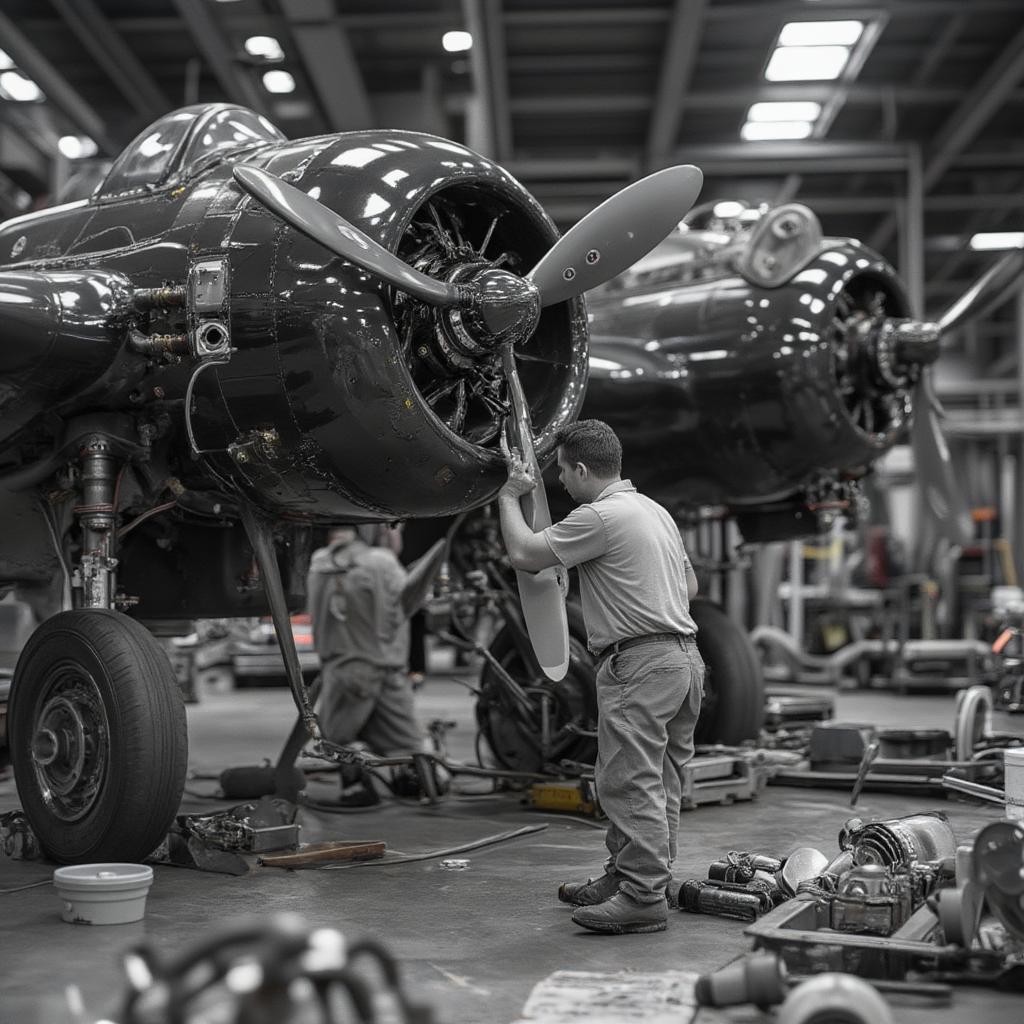Decoding Fighter Plane Names: A Guide to Modern Airpower

Fighter Plane Names, often cryptic and seemingly random, hold a wealth of information about the aircraft’s capabilities and intended role. These names, carefully chosen by manufacturers and militaries, offer a glimpse into the cutting-edge technology and strategic thinking that define modern airpower. Understanding the nomenclature behind these aerial weapons systems is crucial for anyone seeking to grasp the complexities of 21st-century defense strategies.
The Language of Lethality: Understanding Fighter Plane Naming Conventions
Fighter plane names are more than just labels; they are a specialized language. They communicate vital information about the aircraft’s design, mission, and even national origin. For instance, American fighter jets often have names evoking power and aggression, such as “Raptor” or “Viper”, reflecting the US military doctrine. Russian designations, on the other hand, often utilize numerical sequences like the Su-57, indicative of a more pragmatic approach.
US Fighter Plane Designations: Eagles, Falcons, and Lightning Bolts
The United States employs a relatively straightforward system. Often, evocative names like “Eagle” (F-15) or “Fighting Falcon” (F-16) are used, symbolizing speed, agility, and predatory prowess. These names resonate with the public and project an image of strength. Furthermore, designations like “Lightning II” (F-35) directly reference a predecessor aircraft, highlighting a lineage of innovation and technological advancement. The “Lightning II”, a fifth-generation fighter, embodies the evolution of airpower from the original P-38 Lightning of World War II.
Russian Fighter Plane Designations: A Numerical Approach
Russian fighter jet nomenclature relies heavily on a numerical system prefixed by the design bureau’s initials (e.g., “Su” for Sukhoi, “MiG” for Mikoyan-Gurevich). This system, while seemingly less flamboyant, allows for efficient classification and tracking of aircraft development. The Su-57, Russia’s latest fifth-generation fighter, demonstrates this pragmatic approach. While lacking a dramatic name like its American counterparts, the designation clearly identifies its place in the lineage of Sukhoi aircraft.
Beyond National Borders: Global Fighter Plane Names and Their Significance
Other nations also employ distinct naming conventions reflecting their individual cultural and historical contexts. French fighter jets, for example, often have names related to natural phenomena like “Rafale” (gust of wind) or “Mirage” (optical illusion), emphasizing their speed and maneuverability. These names offer insights into the specific design philosophies and strategic priorities of different air forces worldwide.
Why Fighter Plane Names Matter: Public Perception and Military Doctrine
The names given to fighter jets play a crucial role in shaping public perception of military power and technological advancement. A powerful, evocative name can boost morale among pilots and project an image of strength to potential adversaries. Conversely, a poorly chosen name can undermine confidence and even become a source of ridicule.
“A fighter jet’s name is its first strike. It’s a psychological weapon, long before the first missile is fired.” – Dr. Anya Sharma, Aviation Historian and Defense Analyst at the Institute for Strategic Aerospace Studies.
The Future of Fighter Jet Names: Reflecting Technological Advancements
As technology continues to evolve, so too will the names of fighter jets. Future aircraft designations will likely reflect the integration of artificial intelligence, unmanned systems, and directed energy weapons. These names will need to capture the essence of these next-generation capabilities and project a sense of future dominance in the ever-evolving battlespace.
Fighter Plane Names and the Geopolitical Landscape
Fighter plane names often reflect the geopolitical context in which they are developed. During the Cold War, names like “Starfighter” and “Phantom” evoked a sense of mystery and cutting-edge technology, reflecting the intense competition between superpowers. Today, names like “Global Hawk” and “Reaper” highlight the increasing importance of long-range surveillance and precision strike capabilities in modern warfare.
“The evolution of fighter plane names mirrors the evolution of warfare itself. They are a window into the strategic thinking of nations.” – General Michael “Hawk” Peterson (Ret.), Former Commander of US Air Forces Central Command.

Conclusion: Fighter Plane Names – More Than Meets the Eye
Fighter plane names are far more than simple identifiers. They are carefully chosen designations that reflect a nation’s technological prowess, military doctrine, and strategic ambitions. Understanding the language of these names provides a crucial insight into the complex world of modern airpower and its impact on global security. By deciphering the code behind fighter plane names, we gain a deeper understanding of the forces shaping the future of warfare. The next time you encounter a fighter jet’s name, remember that it tells a story of innovation, power, and the ever-evolving quest for aerial dominance. Keep exploring Shock Naue for in-depth analysis and expert commentary on the latest advancements in military aviation.
FAQ: Commonly Asked Questions about Fighter Plane Names
-
What is the significance of the “F” designation in US fighter plane names? The “F” stands for “Fighter,” indicating the aircraft’s primary role in air-to-air combat.
-
Why do some fighter planes have nicknames in addition to their official designations? Nicknames often arise organically within the pilot community and reflect the aircraft’s characteristics or performance in the field.
-
Do all countries follow the same naming conventions for fighter planes? No, each country has its own unique system for designating and naming its fighter aircraft.
-
How are fighter plane names chosen? The naming process varies by country and manufacturer, often involving a combination of historical references, performance characteristics, and symbolic meaning.
-
What is the difference between a fighter jet and an attack aircraft? While both are combat aircraft, fighter jets are primarily designed for air-to-air combat, while attack aircraft are focused on ground attack missions.
-
Why are some fighter plane names retired? Names may be retired out of respect for fallen pilots or squadrons, or when an aircraft is decommissioned from service.
-
What is the longest fighter plane name? While there isn’t a definitive answer, some contenders include the Lockheed Martin F-35 Lightning II and the McDonnell Douglas F-4 Phantom II.




